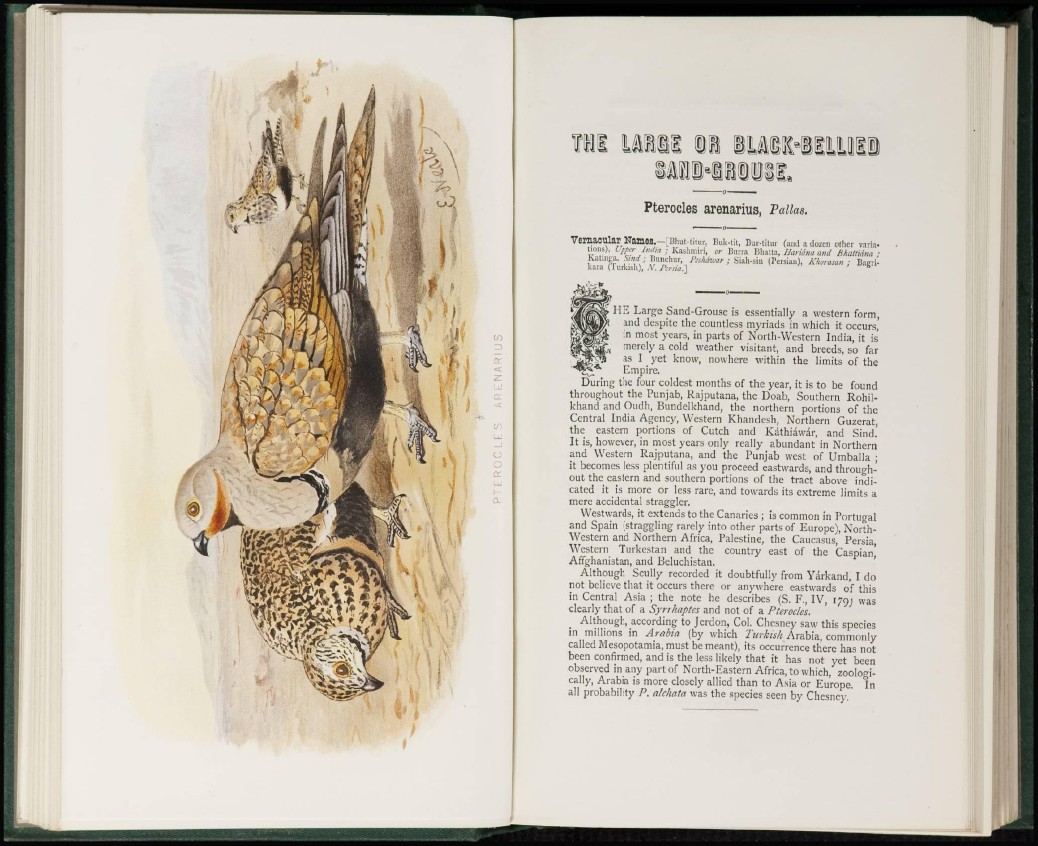
t i n imm m mmmwm
Pterocles arenarius, Pallas.
Vernacular Names.—[Bhut-titur, Buk-lit, Bur-titur (and a dozen other varialions).
Uffcr Indm ¡ Kashmiri, or Burra Bhatta, HarUna and Bhaltidna •
Katiiiga. Smá ; Bunchur, Pcshdiuar ; Siah-sin (Persian), Khurasan ; Bagrikara
(Turkish), N. Persia^ fi
HE Large Sand-Grouse is essentially a western form,
and despite the countless myriads in which it occurs,
in most years, in parts of North-Western India, it is
merely a cold weather visitant, and breeds, so far
as I yet know, nowhere within the limits of the
Empire.
• the four coldest months of the year, it is to be found
throughout the Punjab, Rajputana, the Doab, Southern Rohilkhand
and Oudh, Bundelkhand, the northern portions of the
Central India Agency, Western Khandesh, Northern Guzerat,
the eastern portions of Cutch and Kathiawar, and Sind.
It is, however, in most years only really abundant in Northern
and Western Rajputana, and the Punjab west of Umballa ;
it becomes less plentiful as you proceed eastwards, and throughout
the eastern and southern portions of the tract above indicated
it is more or less rare, and towards its extreme limits a
mere accidental straggler.
Westwards, it extends to the Canaries ; is common in Portugal
and Spain (straggling rarely into other parts of Europe), Northwestern
and Northern Africa, Palestine, the Caucasus, Persia,
Western Turkestan and the country east of the Caspian,
Afghanistan, and Bcluchistan.
Although Scully recorded it doubtfully from Yarkand, I do
not believe that it occurs there or anywhere eastwards of this
in Central Asia ; the note he describes (S. E , IV, 1 7 9 ; was
clearly that of a Syrrhaptes and not of a Pteroclcs.
Although, according to Jerdon, Col. Chesney saw this species
in millions in Arabia (by which Turkish Arabia, commonly
called Mesopotamia, must be meant), its occurrence there has not
been confirmed, and is the less likely that it has not yet been
observed in any part of North-Eastern Africa, to which, zoologically,
Arabia is more closely allied than to Asia or Europe. In
all probability P. alchata was the species seen by Chesney.